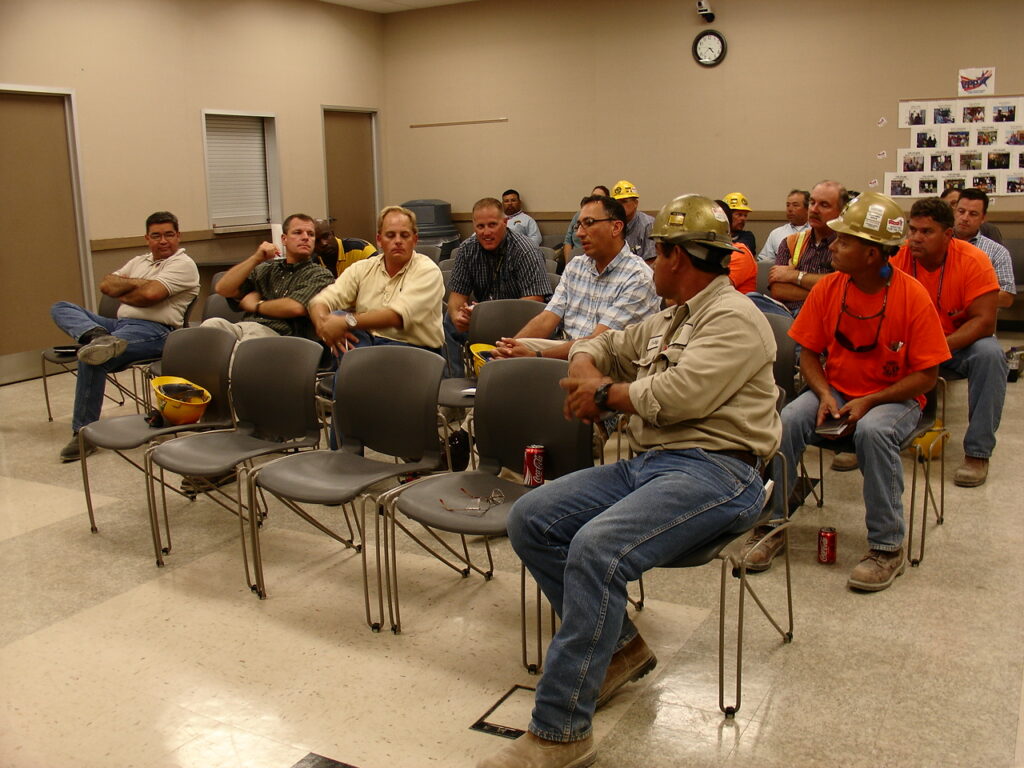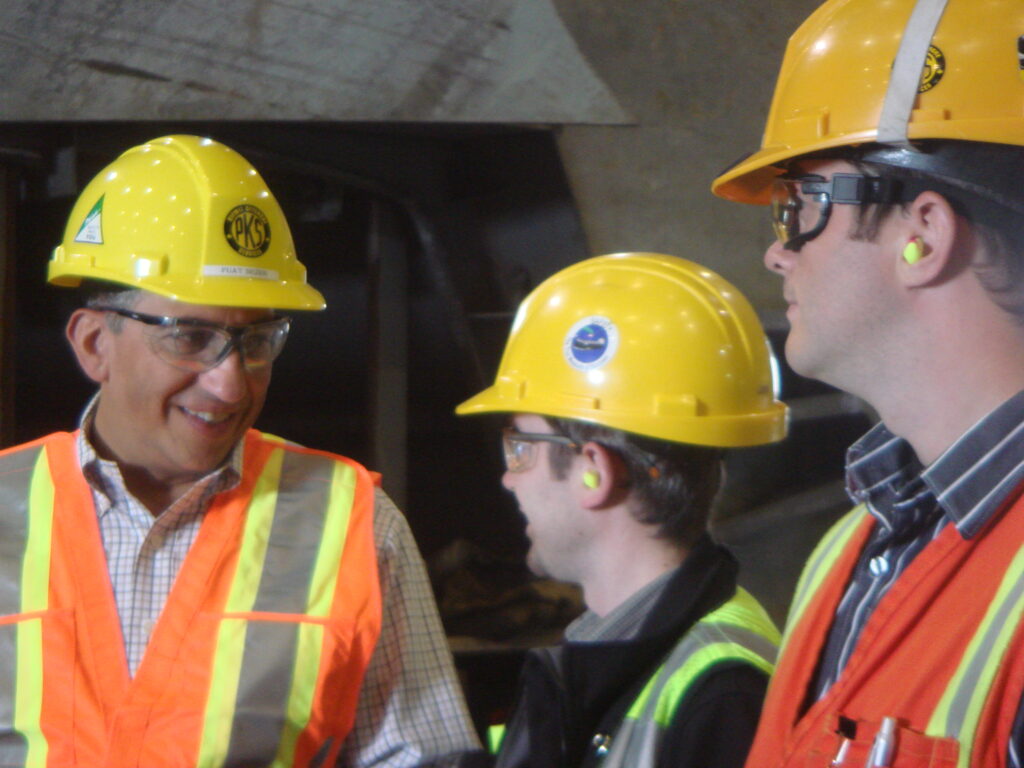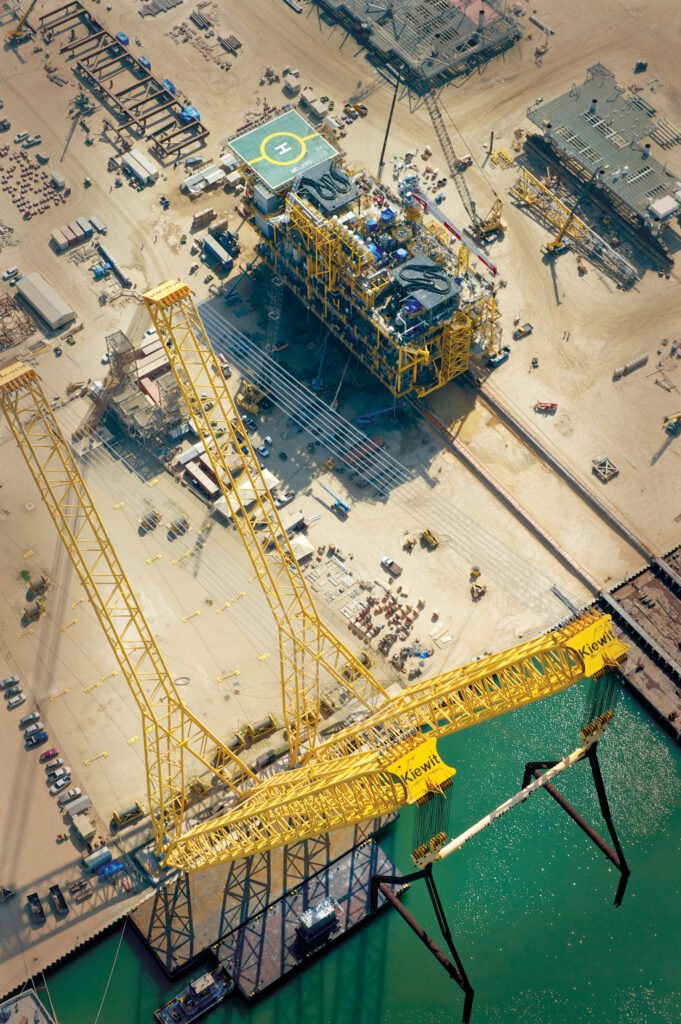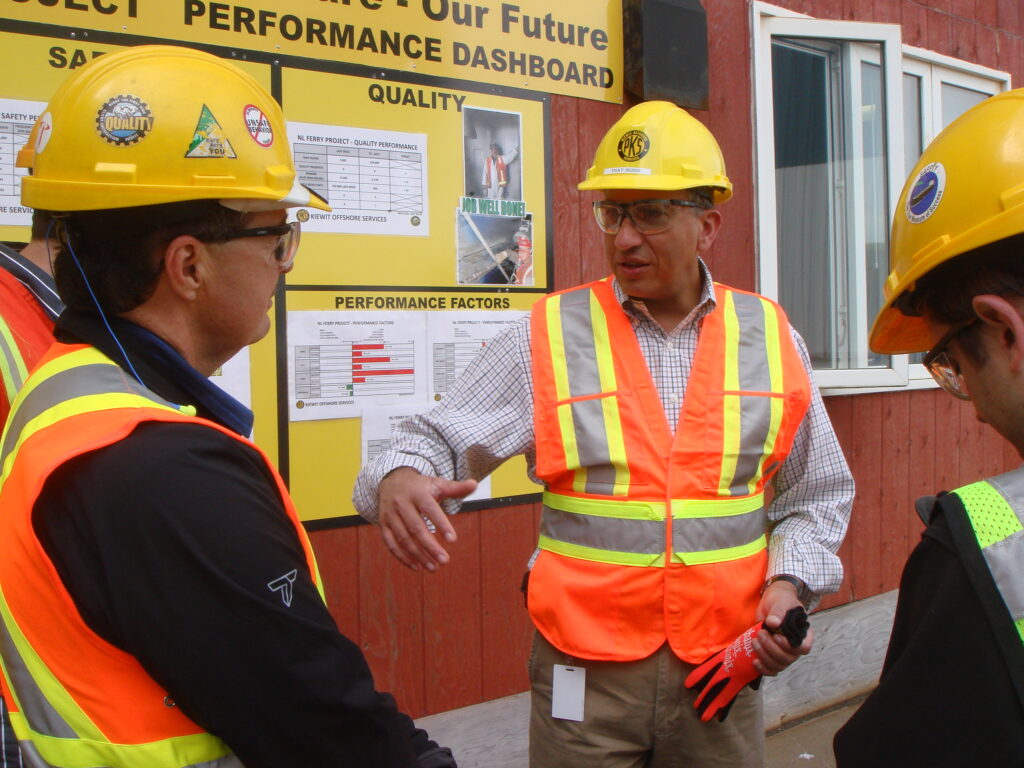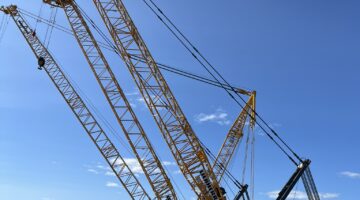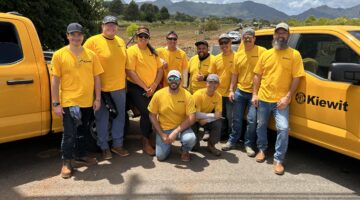From a small Texas yard to industry-leading innovations, Sezer’s 40-year journey reflects the rise of a powerhouse in offshore fabrication.
When Fuat Sezer boarded a Pan Am flight from Ankara to Dallas in the mid-1970s, he wasn’t just leaving home. He was unknowingly heading toward a career that would shape the future of offshore construction in North America.
Over the next 40 years, Sezer’s career would rise alongside Kiewit’s growing offshore business. Today, Kiewit Offshore Services, Ltd., (KOS) a subsidiary of Kiewit Corporation, is a leading fabricator for the oil and gas industry — a success story rooted in resilience, innovation and people like Sezer.
From record-setting projects to breakthrough engineering, the story of KOS is inseparable from the man who helped build it from the ground up.
A born engineer
Born in eastern Turkey, Sezer was drawn to engineering early, inspired by his father, a civil engineer who worked on hydropower and irrigation projects.
“I knew by the time I was five,” Sezer said. “I was going to be a civil engineer.”
After graduating high school, he moved to Texas and earned an engineering degree from Rice University. He intended to return home but asked his father for oneyear of practical experience and began his career with Brown & Root.
“I never went back home,” he said. “Here I am, four decades later.”
The offshore opportunity
Sezer’s path crossed with Kiewit through a former classmate who had joined Gulf Marine Fabricators, a Kiewit subsidiary operating a fabrication yard in Aransas Pass, Texas. In the mid-1980s, the company broke new ground in a market where it had everything to prove.
At the time, the company had just landed its first offshore project: a joint venture with Kaiser Steel to build the Bullwinkle platform for Shell Offshore Inc.
“I was very intrigued with this project,” said Sezer. “A company with no history of building offshore structures wins the world’s biggest offshore structure. I thought it would be really good for me to be able to work on such a project.”
In 1985, he interviewed with Kiewit on a Friday. By Monday, he’d accepted the job.
“I was hired as a structural engineer designing the foundations and how to erect the structure,” Sezer recalled. “We were new to the area and there was a really good camaraderie and friendship on site. And of course, we were very excited to be able to work on this world-record project.”
Kiewit’s heavy lifting device (HLD) prepares to load out a fully integrated offshore topside at its Ingleside Yard.
Steering through setbacks
When Bullwinkle wrapped up in 1988, Kiewit marked a major achievement. But soon after, the offshore market declined. The anticipated boom never came, and Sezer, now a shareholder, felt the pressure.
Kiewit pivoted. In the early 1990s, it partnered with Norway-based Aker to form Aker Gulf Marine (AGM), which absorbed 50 percent of Kiewit’s assets in Aransas Pass and Ingleside. The partnership introduced concrete floating production systems to the U.S. market. Unfortunately, demand for concrete from domestic operators remained low, so Kiewit-led AGM continued building offshore steel structures. In the late 1990s, strategic differences surfaced, a buy-sell clause was triggered and Aker assumed full control of the business.
Sezer and 45 other Kiewit shareholders chose not to follow. Instead, they returned to Kiewit, ready to rebuild from the ground up.
“We were tasked either to acquire someone, buy a company, form another partnership or build a new yard,” said Sezer. Then-CEO Ken Stinson favored the new yard option.
Big lifts, bigger vision
Kiewit acquired new land in Ingleside, applying lessons learned from past operations to develop a state-of-the-art fabrication yard. Sezer briefly explored other ventures, including a fiber optics project in California, but returned to Texas to help lead the offshore reboot.
Another turning point arrived that would reshape the way offshore platforms were built.
In 2000, British Petroleum (BP) outlined plans for a floating production system that spanned continents: build the hull in Korea, fabricate the topside modules in the U.S., then tow it into the Gulf for offshore integration. It was a high-stakes operation, dependent on massive cranes and precision timing.
Kiewit proposed a new approach. Instead of integrating the platform offshore, the company proposed doing it all at its Texas facility. The plan: float the hull beneath the facility, lift the modules into place onshore, then tow the fully- assembled structure into the Gulf.
BP declined. Sezer and his team didn’t.
Within a week, they had sketched concepts for a heavy lifting device (HLD) that could make full onshore assembly possible. Though BP remained unconvinced, Kiewit saw long-term potential. To offset the HLD’s $28 million price tag, Kiewit offered to waive the lifting fees on a second job.
Sezer led a team of young engineers split into two groups. After rounds of critique and iteration, they merged the best elements into one design.
The resulting system was anchored by 60 steel piles and 23 miles of wire rope. It lifted modules straight up, with the platform floated beneath, and lowered them into place. Twin 500-foot booms gave it the muscle to lift 12,500 tons.
“That simple-looking device generated billions in revenue,” said Sezer. “That’s the thing I really enjoy about Kiewit. If you have a good solution, they help you bring it to fruition.”
The blueprint for tomorrow
Markets shifted. Leadership evolved. But Sezer held his ground, a steady constant through decades of change. He held various titles, including supervisor, project manager, sponsor, area manager, and eventually became district manager and president of KOS in 2008. But for Sezer, what was most important was the work and being placed where he added value.
“I never chased titles,” he said. “No matter what I did, working for the company as a young engineer, becoming a supervisor, working as a field engineer, project manager, sponsor, area manager, district manager — I enjoyed every bit of it.”
He encouraged curiosity and calculated risk-taking. “Don’t be afraid to develop things, and as long as you can take calculated risks, and have the ambition and the drive to achieve, I think there’s nothing we can’t do,” he said. “We have all the expertise here within Kiewit. You just need to be inquisitive and curious.”
In early 2025, Sezer retired after 40 years with the company. His journey reflects not just a personal career but the evolution of a business that built itself on resilience, reinvention and bold engineering.
“To our leaders, the people who mentored me, who gave me the opportunity, I’m very grateful,” he said.
Looking ahead, Sezer remains confident in Kiewit’s future.
“There’s no way I can tell you what the next 40 years will look like,” he said. “But one thing is for sure — Kiewit’s culture will continue. It will reinvent itself. And it will be there.”
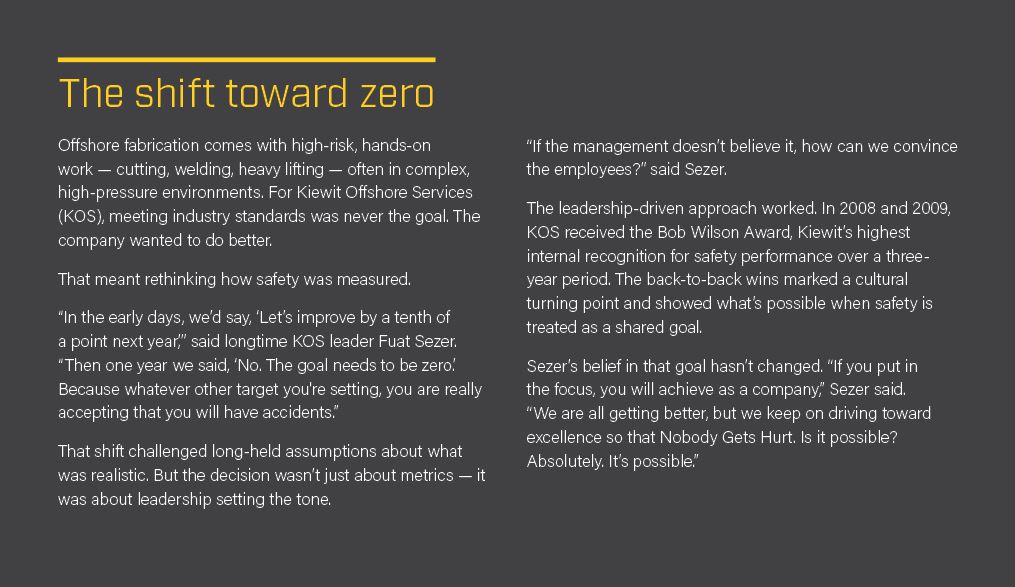
Crews gather around Sezer as he walks through safety and quality metrics posted on a continuous improvement dashboard with the slogan “Our Yard. Our Welfare. Our Future.”
The KOS team accepts the Bob Wilson Award, Kiewit’s highest internal recognition for safety over a three-year period, for the second year in a row.
